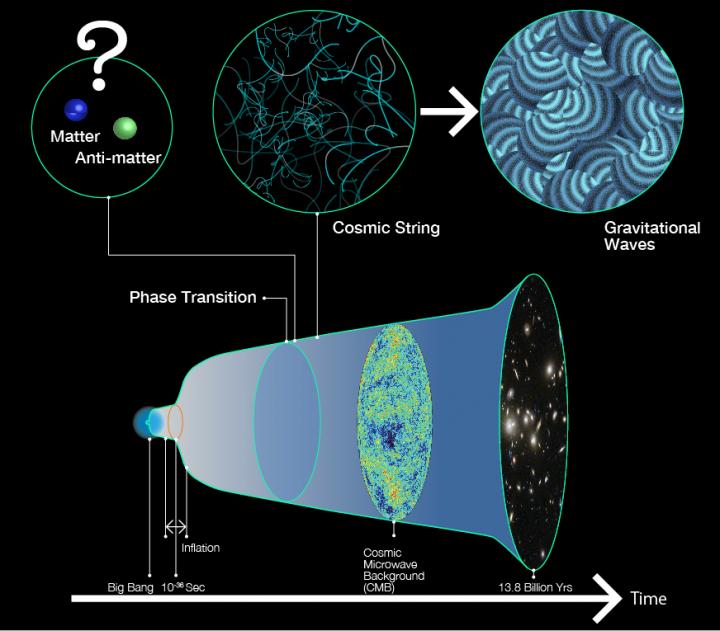Cosmic strings and our existence in the universe
The Big Bang was the beginning of this, our universe. Astrophysicists agree on that much at least. Whether it was or will be the only event of this type is a debate for philosophers. But there are still a few unresolved questions involving the Big Bang. The most important of these would probably be: why do we exist at all? Because after all the four fundamental forces finally developed after the Big Bang, matter and antimatter should always be formed in exactly the same amount. The evolution of the universe would thus be relatively boring: matter and antimatter would mutually destroy each other and the universe would remain as empty as if nothing had ever existed. People? That’s an indication something went wrong.
Now, we have to admit that quite objectively we do exist (unless you subscribe to the conjecture that our world is only a simulation). Therefore, the expected sequence of the Big Bang must have been slightly different from what we expected. More matter than antimatter was formed, eventually leading to us. But why should the universe have preferred matter over antimatter? Nobody has come up with a reason yet that has been convincing for all researchers.
Now an international research team has presented a new approach. Their model is based on the generally accepted idea that neutrinos, superlight, electrically neutral particles, could be used to produce this asymmetry. When the universe was still trillions of time hotter and much smaller than today, these neutrinos formed in processes that resulted in more of one type than the other. Later, matter formed from one type and antimatter from the other. What might have produced the imbalance? The universe could have gone through a phase transition. Phase transitions are common phenomena in nature, for example, when water freezes. They happen relatively suddenly. At the time, such a phase transition could have produced so-called cosmic strings, tiny tubes with the thickness of elementary particles that pervaded the entire universe.
It sounds like something made up by a science-fiction writer. But the idea has one advantage that makes it one theory to be taken seriously. The strings would have to disintegrate at some point. And this would have produced gravitational waves, which, due to their special properties, could be distinguished from gravitational waves produced, for example, from the merger of black holes. If we could measure these waves, scientists would have evidence for the existence of cosmic strings, because gravitational waves could propagate through the early universe. Current, Earth-based gravitational wave detectors cannot detect these differences, but future space-based missions, such as LISA (ESA) or DECIGO (JAXA), could provide the necessary data, the researchers believe.
